Clean Technology
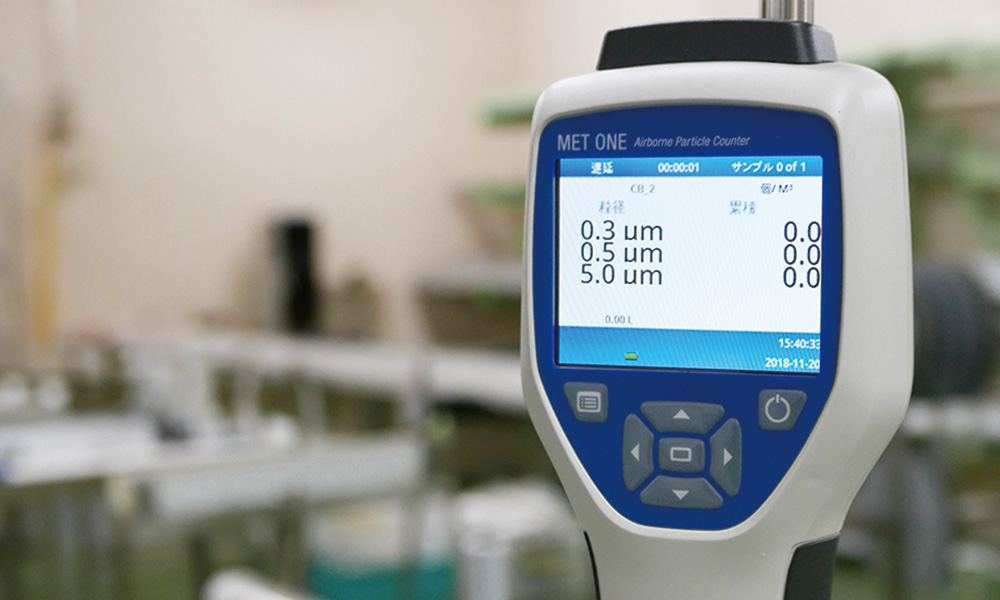
Acquire the advanced clean quality using clean technology (CT)
In the processing of sanitary piping, the processing environment and the degree of cleanliness such as cleaning and packaging greatly affect the quality of final products. Nissho Astec owns two clean rooms, and meets the high quality requirements of clean technology with clean technology (CT).
Features of Clean Technology
Tubular fine processing in a clean environment (Mino plant clean room)
We process and manufacture precision and clean piping for semiconductor and pharmaceutical manufacturing equipment. We process stainless steel tubes into high-precision and clean piping products according to the specifications requested by customers.
Please let us handle your order of precision piping processing of semiconductor and pharmaceutical manufacturing facilities, where extremely high processing accuracy and material surface quality are required.
Precision Cleaning of Electrolytic Polishing in Clean Environment (Sasayama Factory’s Clean Room)
Even if a high quality polished surface is produced by electrolytic polishing, the adhesion of scratches and dirt after treatment will impair the original quality of electrolytic polishing.
We pay close attention to pickling and passivation treatment, cleaning with ultrapure water, drying with clean air, etc., and clean finish of processed products so that our customers can use the final products without worrying about product quality.
Clean packaging in a clean environment (Sasayama Factory’s Clean Room)
Packaging is done in a clean room that is free of dust and dirt. We are also committed to packaging materials and packaging methods, and cooperate with the shipping department to deliver high-quality piping materials to our customers’ hands.
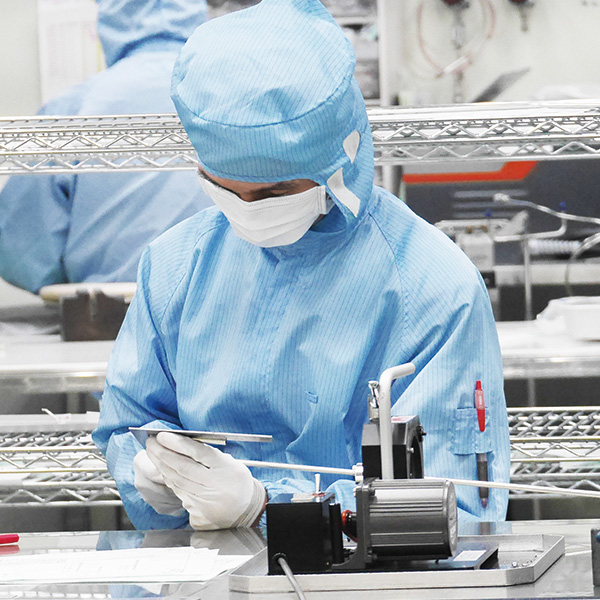
▲ Microfabrication in clean room
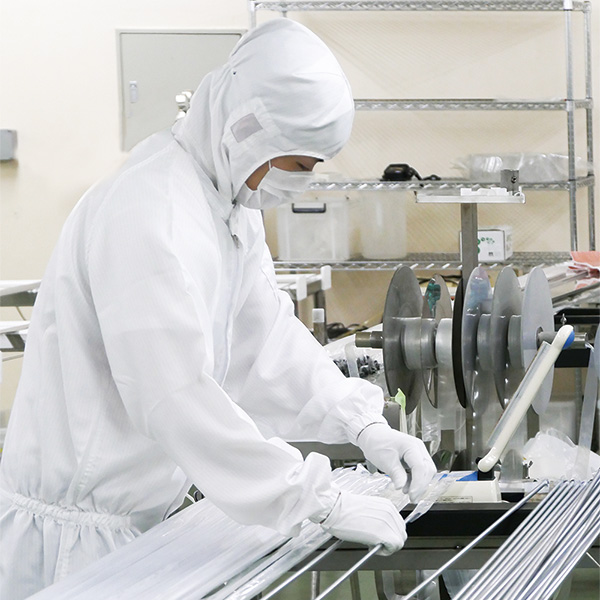
▲ Packaging in clean room
List of words used in clean technology
A room where the concentration of suspended particles is controlled and built to minimize the inflow, generation and stagnation of microparticles in the room, and the temperature, humidity, pressure, etc. are controlled as necessary (ISO 14644-1)
Equipment provided at the entrance of a clean room. When workers and materials enter the clean room filled with clean air, it is necessary not to bring in contaminants such as dust into the room. Therefore, a small room separated by a double door is provided between the clean room and the outside, and clean air is directly blown to the surface of people and objects entering the room to remove dust. There is also a mechanism that does not open the two doors at the same time, and functions as an air lock that shuts off the clean room from the outside.
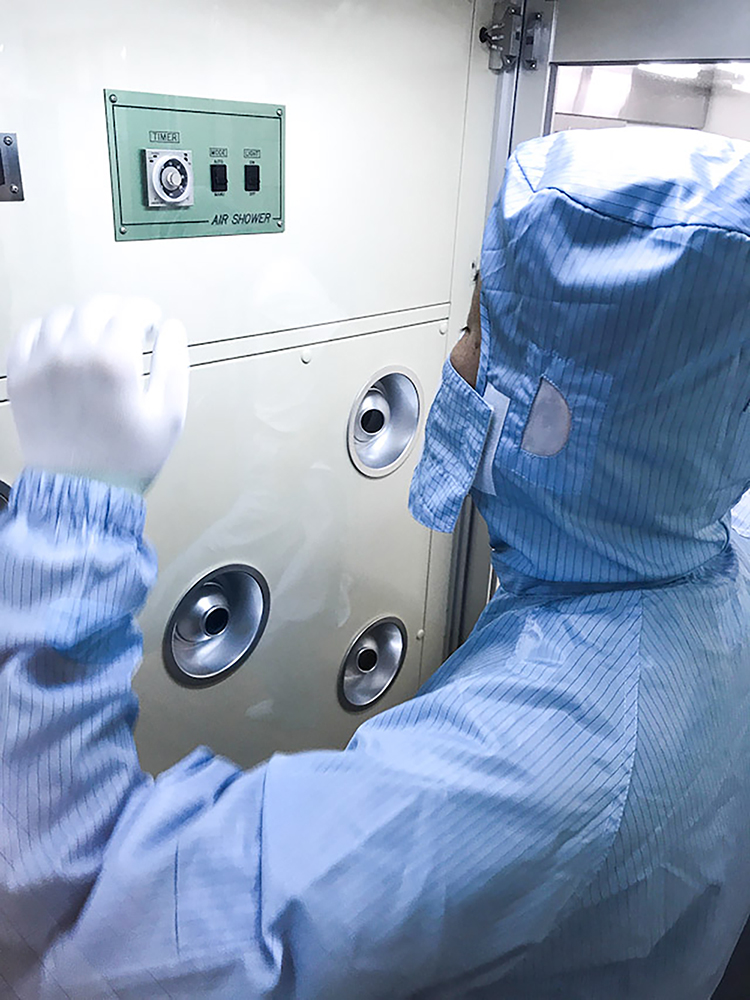
Way to use the air shower
HEPA filter (High Efficiency )
A type of air filter used to remove dust and dirt from the air to make the air clean. It is used as a main filter for air cleaners and clean rooms. (Wikipedia)
An air filter has 99.97% particle repair rate for the particles 0.3µm size at the rated air capacity. Also the pressure drop rate is less than 245Pa.
Dust
Particles in which solid matter changes its shape and size while its chemical composition remains unchanged. (JIS Z 8122)
Ultrapure water
Extremely high purity water from which suspended substances, dissolved substances, fine particles and impurities in water have been removed efficiently by Ultrapure water production equipment.
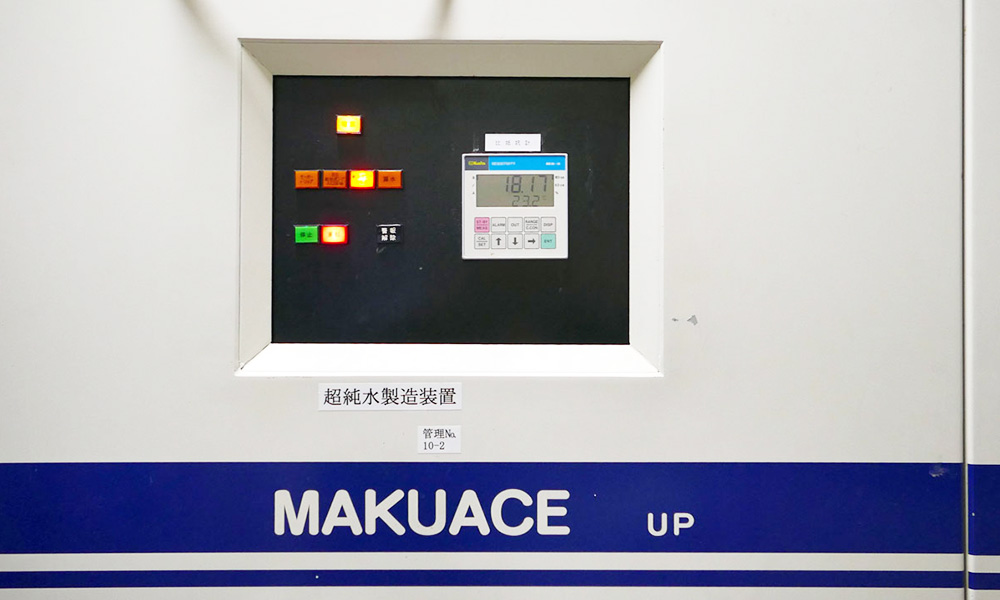
Ultrapure water production system at Sasayama work plant
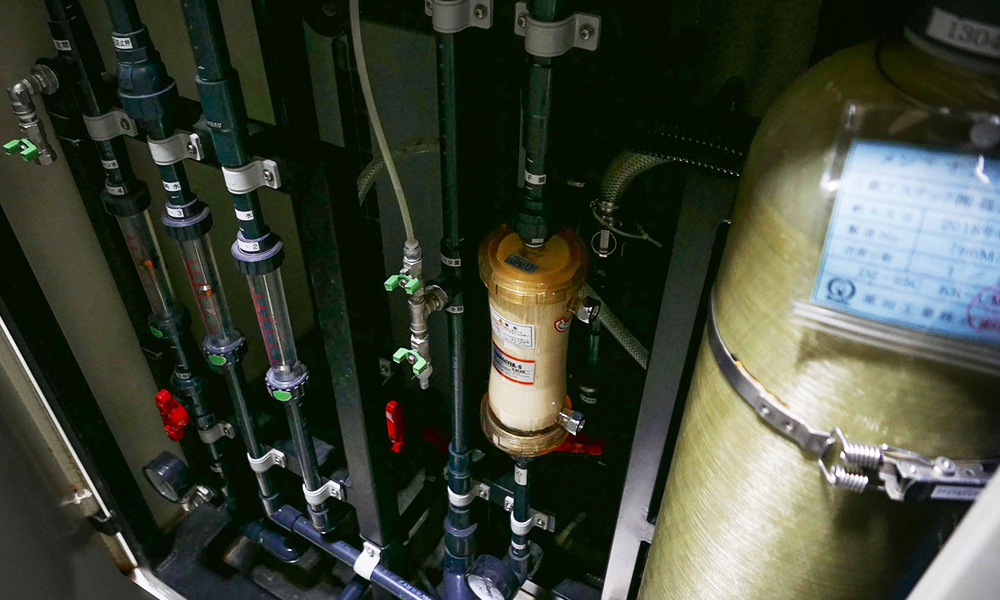
Inside of Ultrapure water production system
Ultrapure water production system
A facility that uses tap water, well water, industrial water, etc. as raw water and purifies the impurities in it using ion exchange resins, using reverse osmosis membranes, ultrafiltration membranes, ultraviolet oxidation, etc. to produce highly purified water.
Water for injection
The water prepared by distillation of ordinary water or purified water or ultrafiltration of purified water is provided for injection. There are those used for purification of injections or those put into containers and sterilized.
Cleanliness grade
Grade cleanliness levels. NOTE ※For example, the grading for particle concentration is determined by the degree of particle concentration by size. In JIS B 9920, the cleanliness grade is expressed by the number of fine particles with a particle diameter of 0.1 μm or more contained in air of 1 cubic meter, expressed as a power of 10 and classified into classes 1 to 8.
Reference:
Japanese Industrial Standard JIS B 9920-1: 2019
| Cleanliness class | Maximum particle number concentration (particles / m3) for particles of a) above target particle size | |||||
|---|---|---|---|---|---|---|
| (N) | 0.1 μm | 0.2 μm | 0.3 μm | 0.5 μm | 1 μm | 5 μm |
| 1 | 10 | c) | c) | c) | c) | d) |
| 2 | 100 | 24 | 10 | c) | c) | d) |
| 3 | 1,000 | 237 | 102 | 35 | c) | d) |
| 4 | 10,000 | 2,370 | 1,020 | 352 | 83 | d) |
| 5 | 100,000 | 23,700 | 10,200 | 3,520 | 832 | e), [ c),d) ] |
| 6 | 1,000,000 | 237,000 | 102,000 | 35,200 | 8,320 | 293 |
| 7 | b) | b) | b) | 352,000 | 83,200 | 2,930 |
| 8 | b) | b) | b) | 3,520,000 | 832,000 | 29,300 |
| 9 | b) | b) | b) | 35,200,000 | 8,320,000 | 293,000 |
a) The maximum allowable number of particles in this table indicates the cumulative number of particles above the target particle diameter. For example, 10 200 particles shown in cleanliness class 5, 0.3 μm include all particles having the same particle size and larger than that particle size.
b) Concentration limits do not apply to this area of the table, as the particle concentration is very high.
c) Because of low concentrations, particle sampling and statistical processing are inappropriate for classification.
d) In view of counting losses in the particle sampling path, maximum allowable particle measurements of both low concentration particles and particle sizes above 1 μm are inadequate for classification.
e) Do not specify 5 μm as the target particle size related to class 5. If additional information is required, coarse particle M display may be adopted.
f) This class is applicable to normal operating conditions.